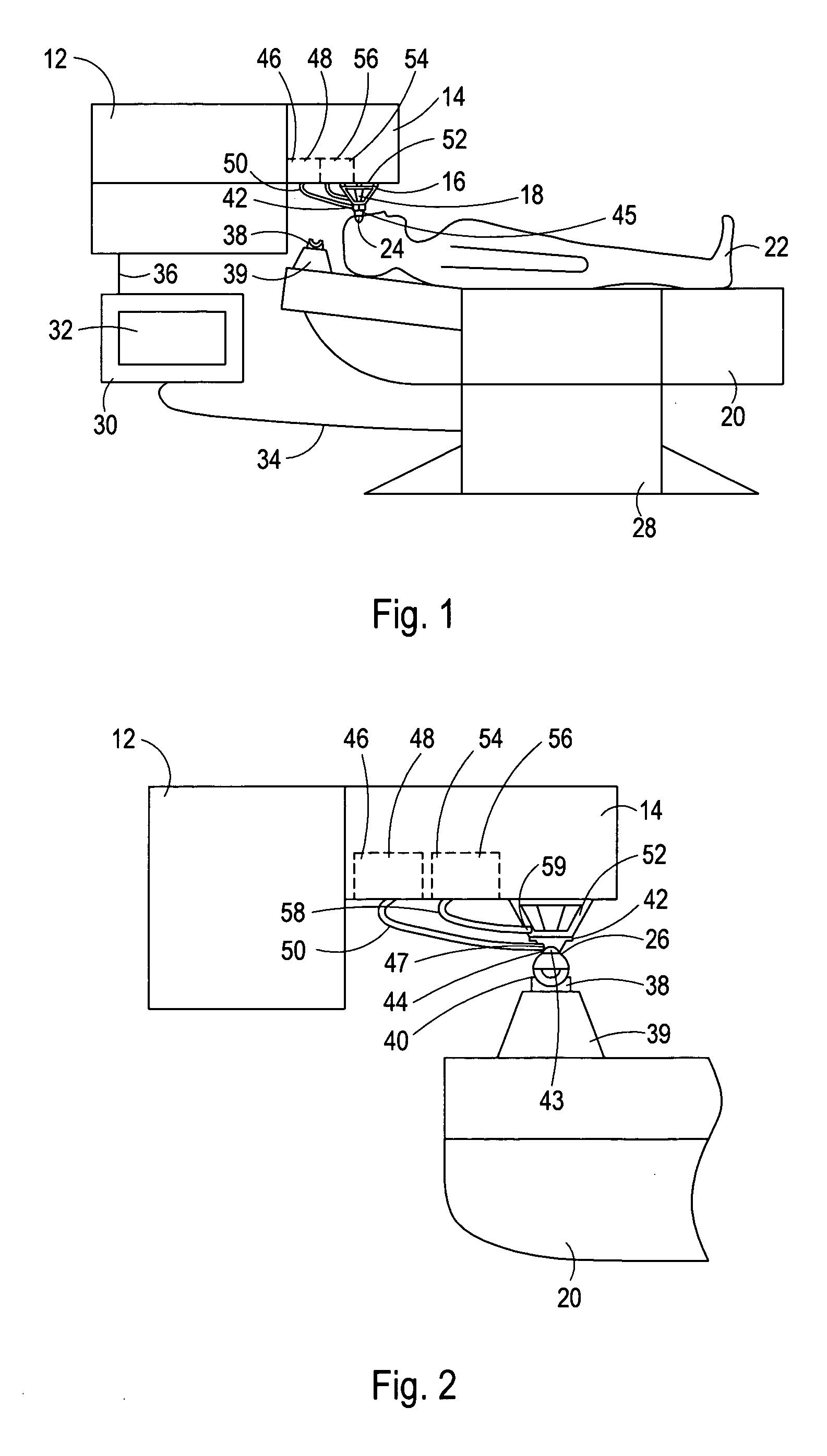System for performing a corneal transplantation
a corneal transplantation and laser surgery technology, applied in laser surgery, medical science, surgery, etc., can solve the problems of difficult the failure of corneal transplantation procedures to achieve this objective routinely, and the difficulty of proper positioning and stabilization of the patient's eye during the procedur
- Summary
- Abstract
- Description
- Claims
- Application Information
AI Technical Summary
Benefits of technology
Problems solved by technology
Method used
Image
Examples
Embodiment Construction
[0021] A system for performing corneal transplantations, in accordance with the present invention, is shown in FIG. 1 and is generally designated 10. As shown, the system 10 includes a stationary surgical laser unit 12, which further comprises a laser source 14 for directing a laser beam 16 along a beam path 18. Preferably, the laser beam 16 is an ultra-short pulse laser beam 16 having a wavelength in the range of about 400 nm to 10 μm. Further, the laser beam 16 has a pulse duration in the range of 1 femtosecond to 100 picoseconds, a pulse repetition rate of about 1 to 1000 kHz, and a pulse energy between about 0.1 microjoule and 1 millijoule. Also, it is to be appreciated that an oscillator laser without an additional amplifier can be used. If so, pulse repetition rates of up to 100 MHz can be achieved with pulse energies in a range of 0.1 nanojoule to 10 microjoules.
[0022] In addition to the laser source 14, the system 10 includes a platform 20 for supporting a patient 22, and f...
PUM
 Login to View More
Login to View More Abstract
Description
Claims
Application Information
 Login to View More
Login to View More - R&D
- Intellectual Property
- Life Sciences
- Materials
- Tech Scout
- Unparalleled Data Quality
- Higher Quality Content
- 60% Fewer Hallucinations
Browse by: Latest US Patents, China's latest patents, Technical Efficacy Thesaurus, Application Domain, Technology Topic, Popular Technical Reports.
© 2025 PatSnap. All rights reserved.Legal|Privacy policy|Modern Slavery Act Transparency Statement|Sitemap|About US| Contact US: help@patsnap.com



